INTRODUCTION
The world demand for energy is increasing rapidly, being one of the main engines for economic development and the welfare of societies. However, to achieve sustainable development, energy sources must be also sustainable, meaning that it is all about energy transition: transitioning to produce more energy with fewer emissions. The energy transition is a crucial step to enhance the energy system’s global socio-economic footprint, global welfare, gross domestic product (GDP), and employment. Yet, the trilemma of providing affordable, reliable, and clean energy while tackling climate change is complex and sometimes divisive.
Countries around the world head for the transition to a low-carbon economy in the context of climate change and global warming. The Paris Agreement marked the first global treaty to combat climate change, control greenhouse gas emissions, and limit the rise in global temperature. It was adopted by world leaders at the United Nations (UN) Climate Change Conference (COP21) in Paris in December 2015. Egypt signed the Paris Agreement in 2016 and ratified it in 2017. The agreement's goal is to substantially reduce global greenhouse gas (GHG) emissions to 2 degrees Celsius while pursuing efforts to limit the increase even further to 1.5 degrees Celsius.
The world needs more than one energy transition pathway to consider the different circumstances of all countries according to the principle of “Common but Differentiated Responsibilities and Respective Capabilities” (CBDR-RC). In 1992, the principle of CBDR-RC was officially formalized in the UN Framework Convention on Climate Change (UNFCCC). This principle recognized that countries have different duties and abilities to address the negative impacts of climate change, but all countries have an obligation to address climate change.
Egypt is accelerating its decarbonization pace and working on energy diversification as it is committed to its “Sustainable Development Strategy: Egypt Vision 2030” and “Integrated Sustainable Energy Strategy 2035”, which were launched in 2015. The Egyptian oil and gas sector has a significant role to support this strategy through a number of projects and initiatives. The Ministry of Petroleum and Mineral Resources (MOPMR) also organized the “Decarbonization Day” at COP27 which highlighted the local, regional, and global success of decarbonization in the oil and gas sector and hard-to-abate industries.

Ministry of Petroleum and Mineral Resources Efforts Toward a Decarbonized Future 4
Egypt's
SECTION 1: DECARBONIZATION STRATEGY

THE EGYPTIAN OIL AND GAS SECTOR’S STRATEGY
Strategic Pillars
Egypt's oil and gas sector is a main driver of economic and social development. The sector strategic pillars are centred around 3 main pillars for Energy Security, Financial Sustainability and Sector Governance. In line with the holistic approach for sustainable development, decarbonization and transition to low carbon energy sources were embedded within these strategic pillars to complement Egypt's oil and gas sector activities in this respect. Accordingly, the sector is working to promote decarbonization activities, monetize decarbonization opportunities and instill a sector wide focus on decarbonization.
DECARBONIZATION KEY PILLARS
The Ministry's plan and activities towards supporting decarbonization and energy transition are based on six main pillars.
Sector's Decarbonization Key Pillars
Energy Subsidy Reform
Energy Security
--
Boost Energy Supply
Diversify Energy Supply Manage Energy Demand
Promote Decarbonization Activities
Decarbonized Natural Gas to complement Renewable Energy
1. Energy Subsidy Reform
Decarbonization (Carbon Intensity Reduction)
Renewables & Green
Petrochemicals
Hydrogen
Financial Sustainability
Address Historic Arrears & Financial Interdependencies
Reform Energy Subsidies
Maximize Value Added From Oil & Gas
Monetize Decarbonization Opportunities
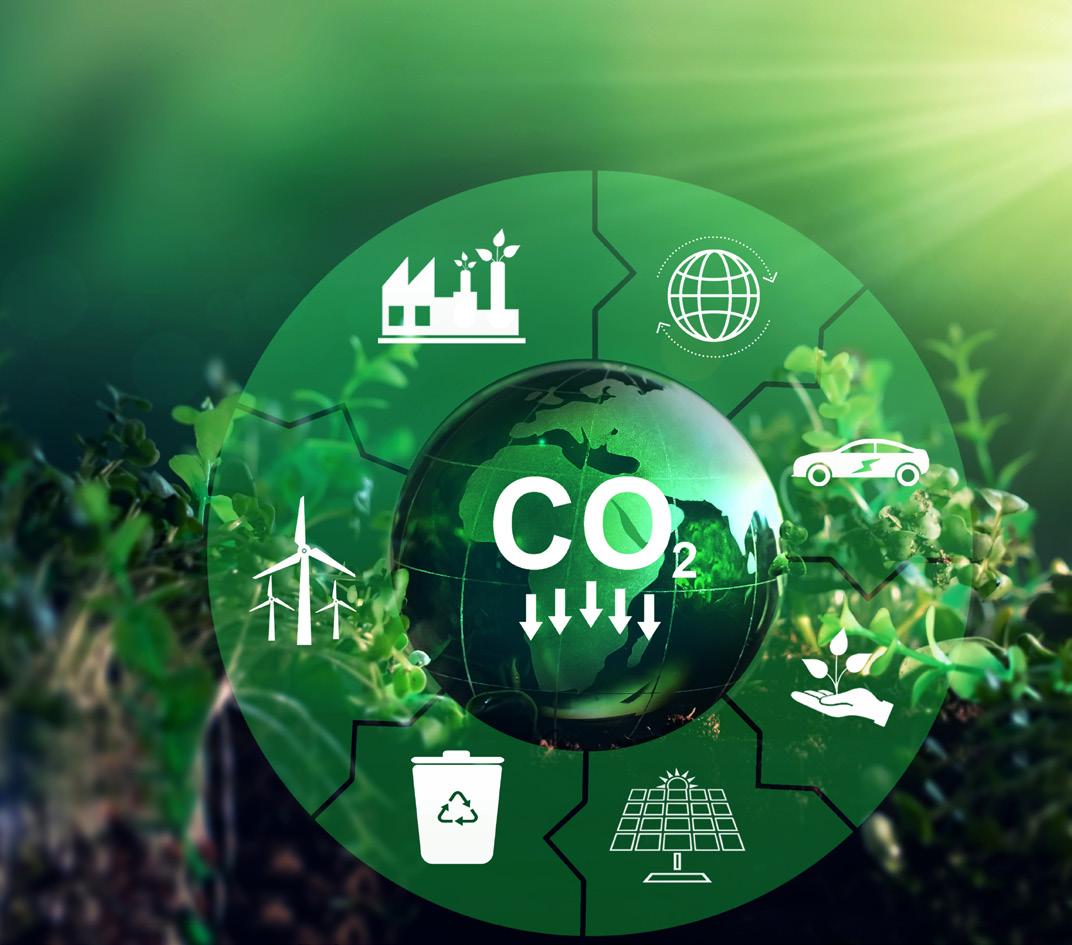
Sector
Governance
---
Improve Sector Governance & Organizational Structure
Capitalize on the Sector’s Human Capital Attractive Investment Climate
Unified Sector-Wide Focus on Decarbonization
In line with the economic reform program launched by the Government of Egypt, an energy subsidy reform program was implemented in order to address chronic challenges of the energy subsidies borne by the government and to ensure a more sustainable approach for fuel pricing. Such challenges included the heavy fiscal burden on the government’s annual budget, disproportionate benefit of rich households due to their relatively higher energy consumption, and absence of a motive for energy efficiency.
Through the energy subsidy reform program, the subsidies are now specifically directed to vulnerable groups and increased programs for targeted social protection measures (social safety nets) were implemented.
Energy E ciency
Egypt's Ministry of Petroleum and Mineral Resources Efforts Toward a Decarbonized Future 6
Moreover, prices of liquid petroleum products are now subject to quarterly review through the Automatic Fuel Indexation system. Egypt's successful implementation of the energy subsidy reform program received acclaim and recognition from leading international organizations.
2. Decarbonized Natural Gas to Complement Renewable Energy

As a cleaner and more environmentally friendly fuel, Egypt took a strategic decision more than 20 years ago to use cleaner, less carbonintensive, and more environmentally friendly fuels. Decarbonized natural gas increasingly became Egypt’s fuel of choice to complement renewable energy generation, which is in line with Egypt’s energy sector strategy for energy transition and boosting decarbonization.
The sector managed to place Egypt on the global map of major players in the natural gas industry particularly in the East Mediterranean region, after achieving self-sufficiency in natural gas in 2018 and resuming exports.
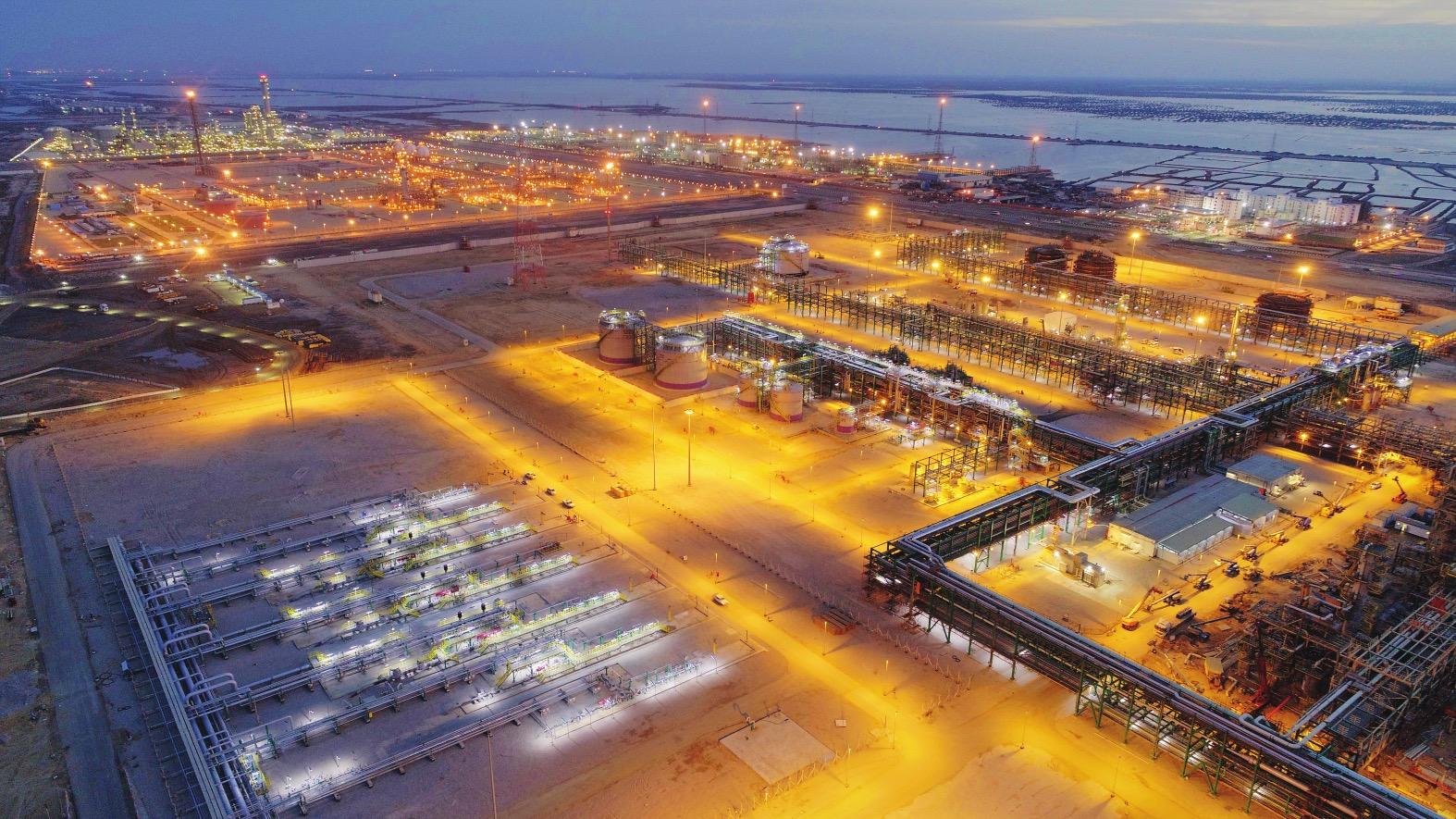
Natural gas consumption increased more than threefold from fiscal year (FY) 1999/2000 to 2022/23. This increase came in light of Egypt’s vision to diversify its energy mix, enhance the transition towards green fuels, and boost decarbonization in the energy sector. 14 million households are now connected to natural gas and close to 480 thousand cars were converted to CNG as a cleaner & environmentally friendly fuel for sustainable mobility.
Natural gas usage has also expanded in other industrial sectors to increase its added value, including petrochemicals and fertilizers production.
Continuous Increase in Natural Gas Consumption (Million Tons) 1999/2000 2014/15 2020/21 2022/23 14 23 35 38 47 50 31 32 Petroleum Products Natural Gas FY 7
Efficiency
Egypt's oil & gas sector considers energy efficiency as the first fuel and the most cost effective way to achieve emission reductions. The sector has managed to achieve significant successes and achievements under the Energy Efficiency Domain.
For effective governance, the Ministry established a robust institutional setup for Energy Efficiency across the sector companies to enhance and support energy efficiency activities. In this regard, the MOPMR inaugurated the Center of Excellence of Energy Efficiency and Process Optimization, which will provide its services to improve energy efficiency in all energy sectors within Egypt and Africa. The Ministry also organized three editions of the “Egyptian Petroleum
Sector Energy Efficiency Conference” while the fourth-edition preparations are ongoing. This is in addition to developing an energy efficiency capacity building plan for more than 1,000 trainees, and implementing the first energy efficiency middle management program for 247 Engineers. It also established a database for Energy Consumption and Emissions covering all sector operations. Moreover, it implemented five energy audits across refineries, upstream and petrochemical companies that identified energy efficiency improvement projects with potential to reduce energy consumption and emissions by 15%.
4. Decarbonization (Carbon Intensity Reduction)
The oil and gas sector is working to implement decarbonization projects to progressively lower the carbon footprint (carbon intensity) of the sector. The sector developed a six-year decarbonization projects plan with expected reductions of 8 million tons (mmt) of CO2 equivalent with investments reaching $600 million.
In line with Egypt’s leading regional role in climate action, H.E. President Abdel Fattah El Sisi announced that Egypt joined the Global Methane Pledge in the oil and gas track at the Major Economies Forum on Energy and Climate Change in June 2022. A methane measurement campaign was also conducted in 2022, which covered six gas facilities and one tank farm. A second methane measurement campaign was also recently completed in more than 25 facilities.
Egypt also endorsed the World Bank initiative of “zero routine flaring by 2030” and the oil & gas sector is cooperating with the World Bank program for “Global Gas Flaring Reduction (GGFR)" to achieve this
More than 3 Folds Increase in Natural Gas Consumption (%) Natural Gas Petroleum Products 1999/2000 2020/21 2014/15 62 52 64 2022/23 65 48 38 36 35 More than 20 Folds Increase in Natural Gas Consumption (%) 1980/1981 1999/2000 33 67 63 5 3 6 5 5 13 2014/15 62 5 4 3 2 12 12 2020/21 60 6 5 3 1 16 9 2022/23 56 7 6 4 1 16 10 *Iron & Steel, Cement & Other Industries *
3.
Energy
Energy E ciency Projects 247 0.9 4 Energy Saved GW/y THE ENERGY EFFICIENCY PROJECTS INCLUDE: Operational optimization Eliminating waste in utility systems Energy Load Management Water re-use and recycling Heat and power integration Value Saved Through $115 million/y ANNUAL ENERGY SAVING Applying No/Low-Cost Energy E ciency Measures
Egypt's Ministry of Petroleum and Mineral Resources Efforts Toward a Decarbonized Future 8
target. In this respect, the sector succeeded in implementing more than 20 flare gas recovery projects. Reducing flaring is a key element of Egypt National Determined Contributions (NDCs) to achieve flaring GHG reduction of 65% in 2030 compared to BAU.
Carbon capture, utilization, and storage (CCUS) is also considered another key decarbonization solution as it refers to a suite of technologies that can play a diverse role in meeting global energy and climate goals, according to the IEA. The sector is collaborating with its strategic partners to implement CCUS projects.
5. Renewables & Green Petrochemicals
The oil and gas sector is actively working to boost the use of renewable energy across the sector’s facilities to reduce emissions and save gas for increasing its value-added use as well as LNG exports.
The sector is also working to implement pioneering projects for the production of bioenergy and green petrochemicals. Through its affiliate Wood Technology Company (WOTECH), the sector is contributing to support the government's efforts to transform rice straw from an environmental challenge into an economic opportunity by producing medium-density fiberboard (MDF) wood. The produced MDF can cover part of the local market demand and will be used in various sectors like furniture, construction, and decoration. This is in addition to offering several job opportunities at Nile Delta's Beheira governorate..
Moreover, Egyptian Petrochemicals Holding Company (ECHEM) and the UAE’s Rega Green Energy signed an memorandum of understanding (MoU) to produce algae oil, which is used in the production of bio-jet fuel and green naphtha for use in the production of environmentally friendly petrochemical products.
Renewables Projects
Main Green Petrochemical Projects
Total Green Petrochemical Projects
$1.2 billion
Investment Cost
6. Hydrogen





2.1 MMPTA
CO2 Emission Reduction
Egypt has several assets and strong points for leveraging its hydrogen potential, including a strategic location with access to potential global markets in Europe and East Asia, significant renewable energy resources, well developed infrastructure, as well as capitalizing on Egypt’s human capital. Accordingly, low-carbon hydrogen will be an integral part of Egypt’s energy transition.
In this respect, hydrogen is a key pillar in Egypt’s oil and gas sector decarbonization pillars to capitalize on the sector’s expertise and potential across the hydrogen value chain. The MOPMR is supporting leading efforts to develop Egypt’s low-carbon hydrogen strategy in collaboration with an international leading consultant. Within this strategy, a vision was crafted to realize Egypt’s ambition to become a global leader in the low-carbon hydrogen economy.
To enhance collaboration with partners and share best practices, The MOPMR continues to cooperate with leading countries and entities to advance hydrogen efforts.
The Ministry co-signed a declaration of intent with the German Ministries of Economic Affairs and Climate Action, and Economic Cooperation and Development Cooperation in the field of green hydrogen, emphasizing the common goal of creating a suitable environment for sustainable economic and environmental development for both countries. The sector entities also signed a number of MoUs with leading organizations to cooperate in the field of hydrogen.
Furthermore, the Ministry is participating in the "Hydrogen for Development Partnership" that was launched by the World Bank during COP27, which aims for developing human capacity, regulatory solutions, business models, and technologies toward the roll out of low-carbon hydrogen in developing countries.
Most recently, a joint development agreement was signed with Scatec for the development of two hydrogen projects, namely production of green ammonia at Misr Fertilizers Production Co (MOPCO) facilities, and production of green methanol utilizing biogenic CO2 from Egyptian bioethanol company.
Production (KTA/y) Investment Cost ($ million) CO2 Emission Reduction (mmt/y) Project Bio-Ethanol Production from Molase Wooden plates production (MDF) from Rice Straw Sustainable Aviation Fuel SAF Production of Biodegradable Plastic - Poly Lactic Acid (PLA) 40 lactic acid 75 Polylactic acid 100 205,000 m³ bioethanol MDF 120 KTA SAF 600 120 300 200 1.2 0.3 0.4 0.2
Projects & Measures Energy Saved Co2 Emission Reduction Value Saved 24 50 KTPA $1 million/y 25 GWh Thermal 9
SECTION 2: MINISTRY’S LOCAL, REGIONAL, AND INTERNATIONAL EFFORTS

GHG EMISSION REDUCTION
Egypt has made great strides toward reducing emissions in the local industry by ensuring the establishment of low-carbon infrastructure projects in industrial areas. Although Egypt’s share of global emissions is estimated at only 0.6%, one of the lowest globally, emissions and economic growth are tightly interlinked. Energy, transport, and industry sectors account for around 80% of Egypt’s GHG emissions, according to the World Bank.
In order to implement tangible projects across the six main decarbonization pillars, Egypt’s oil and gas sector was able to achieve emissions reductions of 5.4 million tons annually (mmt/y) of CO2 equivalent. The sector is currently working to implement additional projects that could realize savings of 1.4 mmt/y of CO2 equivalent. The sector can achieve cumulative savings of 6.8 mmt/y of CO2 equivalent.
REGIONAL COOPERATION
EMGF Decarbonization Initiative

To leverage the synergies of regional collaboration to drive decarbonization, Egypt initiated efforts to develop a decarbonization initiative for the East Mediterranean Gas Forum (EMGF). The EMGF announced the “EMGF Decarbonization Initiative” as a leading model to further drive the decarbonization of natural gas resources in the region. The initiative aimed at identifying specific actionable recommendations along four main pillars, namely policies/regulations, financing, technologies, and capacities for developing a common unified regional East Mediterranean market promoting decarbonization.
Moreover, the EMGF published the “EMGF Natural Gas Decarbonization in the East Mediterranean Region” report. The report defines the current baseline and the future direction for the EMGF as a leading model to reach the ambitious goal of decarbonizing the region.
COOPERATION WITH MAJOR INTERNATIONAL ENERGY COMPANIES
Collaboration with all energy industry stakeholders is a key enabler to create synergies across the six pillars.
The oil and gas sector companies signed MoUs with many international companies from different countries specializing in energy transition, decarbonization, and hydrogen fields.
Moreover, there is coordination with major international institutions to support the sector's efforts in the field of emissions reduction.
Major Completed Projects Flare Gas Recovery 29 Projects 1,400 KTPA CO2 4 GW/y Gas Saved Energy Saved Value Saved Value Saved Energy E ciency 247 Projects & Measures 900 KTPA CO2 25 GWh Thermal Energy Saved Value Saved Renewables 24 Projects 50 KTPA CO2 Natural Gas Delivery 14 Million Units 900 KTPA CO2 CNG Connection 500,000 Vehicles 2,150 KTPA CO2 Major Ongoing Projects Flare Gas Recovery 7 380 Energy E ciency 2 340 Green Petrochemicals 2 700 Projects Projects Projects KTPA CO2 KTPA CO2 KTPA CO2 Emission Reduction (MM TPA CO2) Completed Ongoing Total 5.4 1.4 6.8
11
Underway Cooperation with International Institutions
 US Department of Energy
European Union
United States Trade and Development Agency
European Bank for Reconstruction and Development
International Energy Agency
World Bank
US Department of Energy
European Union
United States Trade and Development Agency
European Bank for Reconstruction and Development
International Energy Agency
World Bank
EU DOE IEA WB EBRD JICA USTDA Egypt's Ministry of Petroleum and Mineral Resources Efforts Toward a Decarbonized Future 12
Japan International Cooperation Agency
SECTION 3: SHEDDING
LIGHT ON COP27 DECARBONIZATION DAY

Egypt successfully organized the 27th edition of the Conference of the Parties (COP27) in Sharm El Sheikh in November 2022 which witnessed the participation of over 100 heads of state and government, and more than 50,000 people. COP27 came as a key opportunity for strategists and experts to have open discussions on decarbonization, energy transition, and policy-making. The international community praised Egypt's success in organizing the COP27 climate conference. Egypt’s oil and gas sector is a strong advocate for the commitment of the energy industry to decarbonization to support the global efforts to overcome the energy trilemma. In line with this vision, and in close coordination with the COP Presidency, Egypt's oil and gas sector succeeded in organizing the first ever "Decarbonization Day" as part of the official thematic days at COP27. This was the first time ever in COP summits that those who participated in COP27 had the opportunity to take part in Decarbonization Day, a day that not only seeks to highlight the importance of decarbonization as a cause but was a clear demonstration of Egypt’s firm commitment to achieving the objectives of the Paris Agreement while pushing for a just energy transition.
MAJOR SESSIONS & BILATERAL MEETINGS
The Decarbonization Day was opened by H.E. Tarek El Molla, Minister of Petroleum and Mineral Resources, H.E. John Kerry, U.S. Special Envoy for Climate, and H.E. Gerd Muller, United Nations Industrial Development Organization (UNIDO) Director General. It covered eight sessions and showcased efforts, commitments, and enablers for accelerating decarbonization in hard-to-abate industries. This is in addition to 20 bilateral meetings with a number of ministers, officials from international companies, as well as leading experts from global and regional energy institutions.
PARTNERSHIPS & AGREEMENTS
Seven MoUs were signed between the oil and gas sector and a number of international companies specialized in the energy transition, decarbonization, and hydrogen fields. The MOPMR also signed an MoU with the EU in partnership with the Ministry of Electricity and Renewable Energy on green hydrogen.
7 Signed MoUs with International Companies
KEY OUTCOMES OF EGYPT’S OIL AND GAS SECTOR’S PARTICIPATION
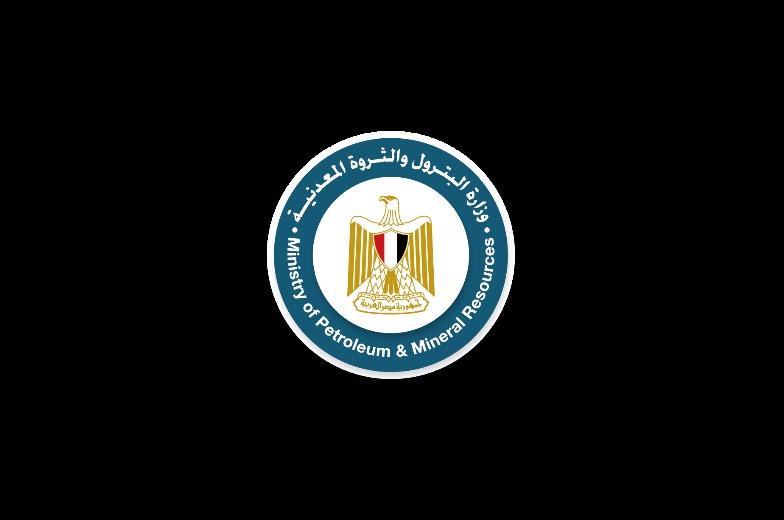
By the end of COP27, the oil and gas sector announced a number of outcomes as a result of the participation of the sector in COP27, as follows:
» Egyptian Petroleum Sector Energy Efficiency Strategy (20222035)
» Sharm El-Sheikh Oil and Gas Methane Reduction Roadmap
» Low Carbon Hydrogen Strategic Framework
» EMGF Decarbonization Initiative

Sharm El Sheikh Oil and Gas Methane Roadmap
Government and industry collaboration can translate strategy into implementation and accelerate methane emission reduction across the oil and gas value chain
Near-term impact
Next 12 months
Program establishment








Key elements of a methane emissions reduction roadmap
Measurement and reporting
Measurement and reporting
Methane emissions survey Awareness campaign
Detection and rapid response

Medium-term impact
Beyond one year
Gaps and barriers assessment
Best practice sharing and capacity building
Target setting
Performance monitoring
Measurement and quantification
Reporting system
 Shell HiiROC
Siemens Microsoft SeaSplit
General Electric TotalEnergies Toyota Tsusho
Shell HiiROC
Siemens Microsoft SeaSplit
General Electric TotalEnergies Toyota Tsusho
Egypt's Ministry of Petroleum and Mineral Resources Efforts Toward a Decarbonized Future 14

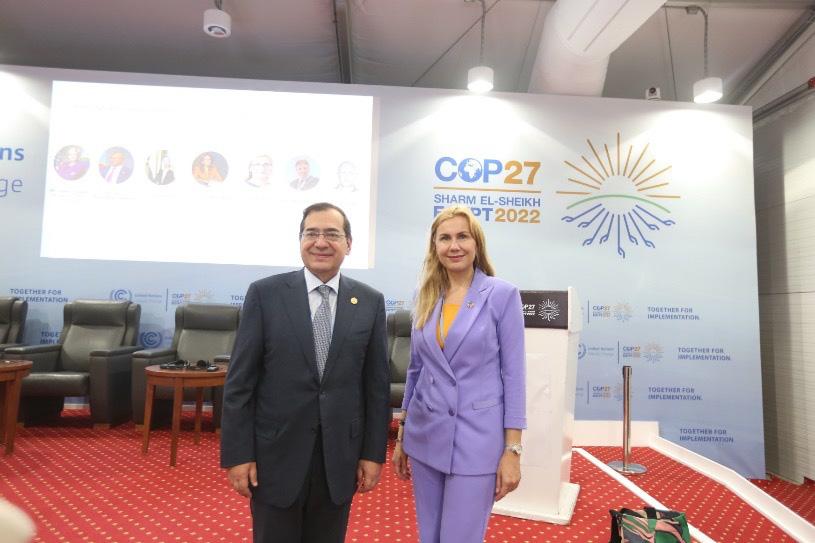
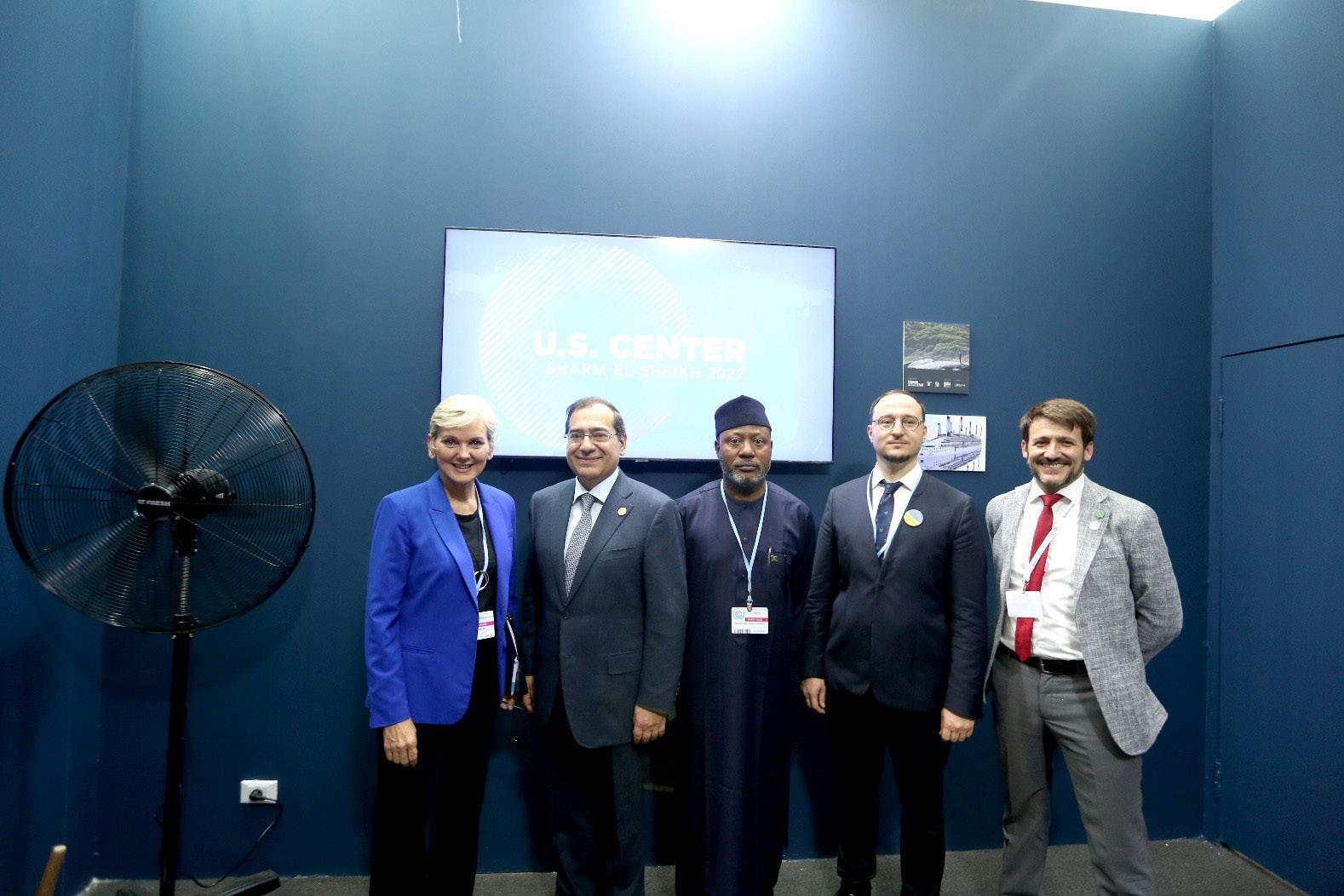


15











 US Department of Energy
European Union
United States Trade and Development Agency
European Bank for Reconstruction and Development
International Energy Agency
World Bank
US Department of Energy
European Union
United States Trade and Development Agency
European Bank for Reconstruction and Development
International Energy Agency
World Bank











 Shell HiiROC
Siemens Microsoft SeaSplit
General Electric TotalEnergies Toyota Tsusho
Shell HiiROC
Siemens Microsoft SeaSplit
General Electric TotalEnergies Toyota Tsusho















